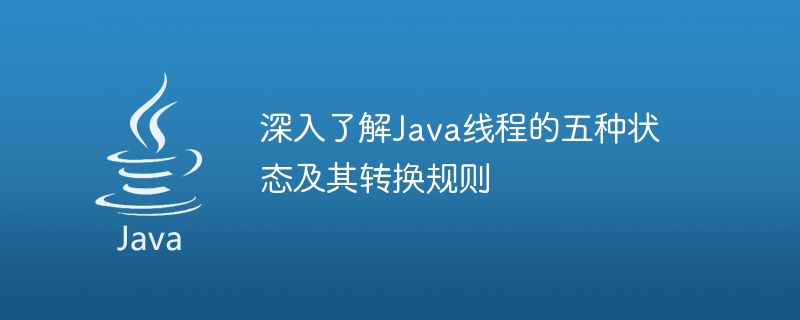

In-depth understanding of the five states of Java threads and their conversion rules
1. Introduction to the five states of threads
In Java, the life cycle of a thread can It is divided into five different states, including new state (NEW), ready state (RUNNABLE), running state (RUNNING), blocked state (BLOCKED) and terminated state (TERMINATED).
Blocked state (BLOCKED): Under the following circumstances, the thread will enter the blocking state:
2. Conversion rules between states
There are certain conversion rules between thread states. Below we introduce the conversion rules between each state respectively.
3. Code Example
The following is a simple code example, showing the conversion rules between thread states:
class MyThread extends Thread {
@Override
public void run() {
try {
Thread.sleep(1000);
System.out.println("线程执行完毕");
} catch (InterruptedException e) {
e.printStackTrace();
}
}
}
public class ThreadStateDemo {
public static void main(String[] args) {
MyThread thread = new MyThread();
System.out.println("线程创建后状态:" + thread.getState());
thread.start();
System.out.println("调用start()方法后状态:" + thread.getState());
try {
Thread.sleep(500);
} catch (InterruptedException e) {
e.printStackTrace();
}
System.out.println("等待500ms后状态:" + thread.getState());
try {
thread.join();
} catch (InterruptedException e) {
e.printStackTrace();
}
System.out.println("调用join()方法后状态:" + thread.getState());
}
}Run the above code, you can see The output result is as follows:
线程创建后状态:NEW 调用start()方法后状态:RUNNABLE 等待500ms后状态:RUNNABLE 线程执行完毕 调用join()方法后状态:TERMINATED
The above code creates a thread object MyThread that inherits from the Thread class. In the main thread, we can observe the state changes of the thread object at different stages.
By having an in-depth understanding of the five states of Java threads and their conversion rules, we can better grasp the principles of multi-threading and further improve the ability of concurrent programming. At the same time, in the actual development process, the judgment and processing of thread status are also very important. I hope this article can be helpful to everyone.
The above is the detailed content of Detailed explanation of the five states of Java threads and state transition rules. For more information, please follow other related articles on the PHP Chinese website!
 How to check server status
How to check server status
 Introduction to reasons why remote desktop cannot connect
Introduction to reasons why remote desktop cannot connect
 Popular remote connection software
Popular remote connection software
 How to implement jsp paging function
How to implement jsp paging function
 How to compare the file contents of two versions in git
How to compare the file contents of two versions in git
 What are the methods of rounding in sql
What are the methods of rounding in sql
 Introduction to hard disk performance indicators
Introduction to hard disk performance indicators
 What system is qad?
What system is qad?




